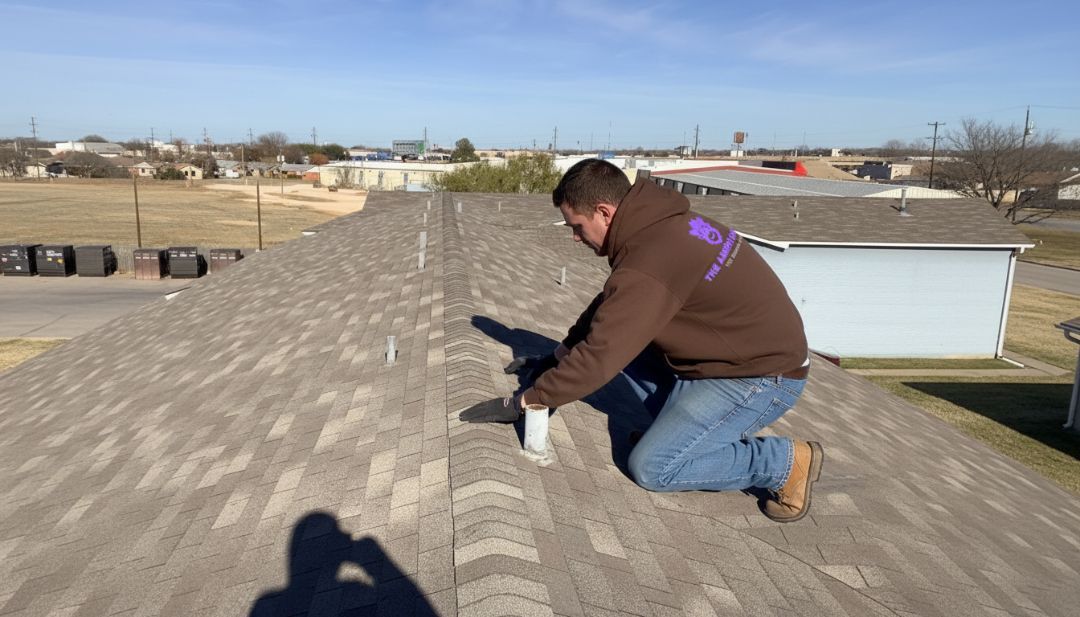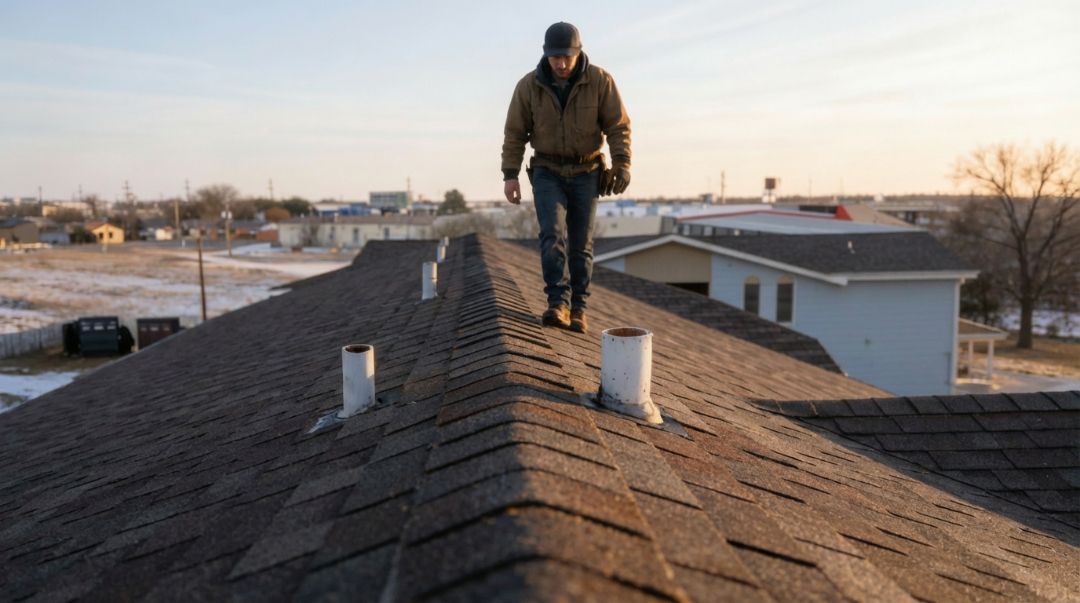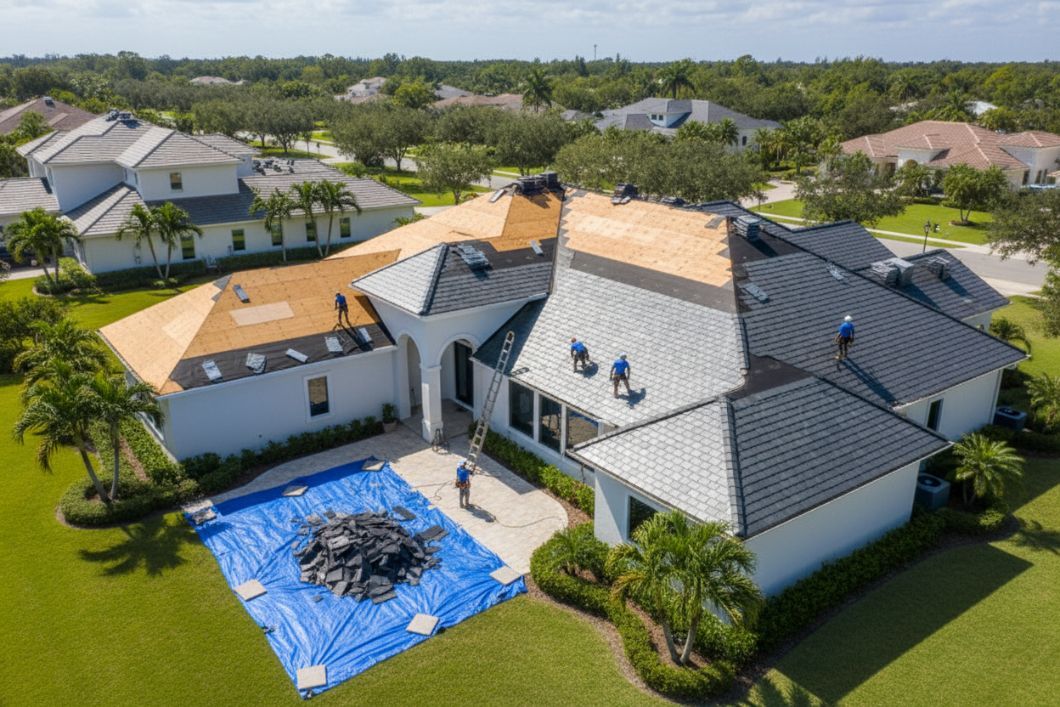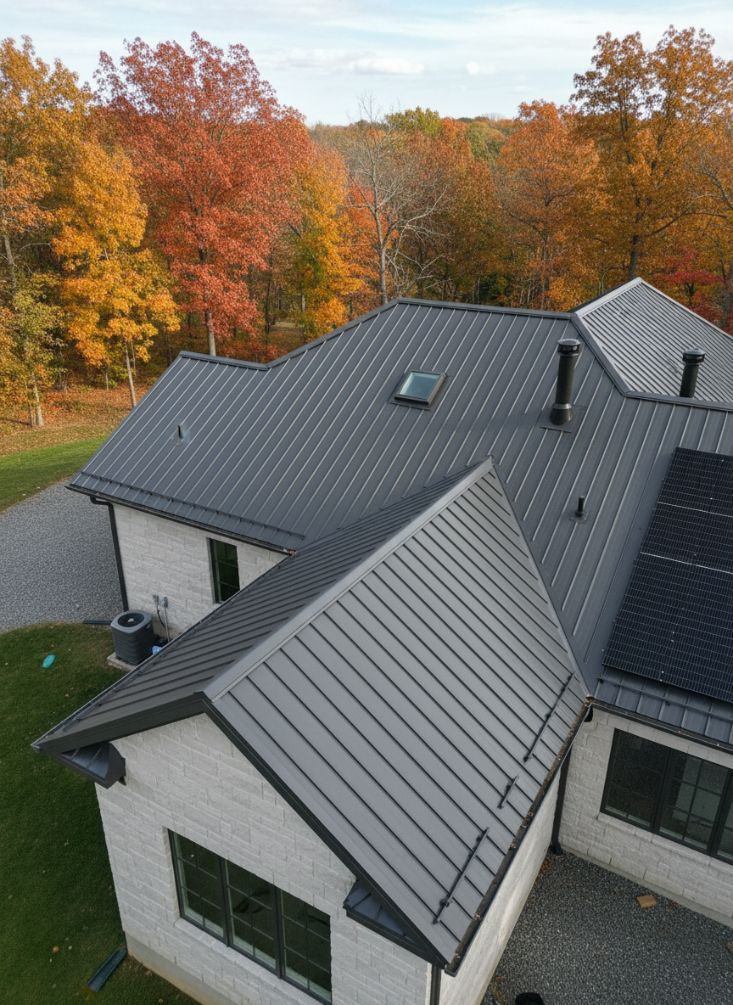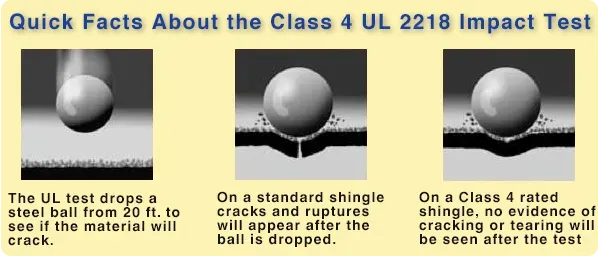5 Common Roofing Myths That Could Cost You Thousands
TLDR;
Believing false roofing information can lead to costly repairs, wasted money, and reduced roof life. The five most damaging myths involve ignoring inspections, thinking new roofs need no care, assuming all materials are equal, believing metal roofs attract lightning or are noisy, and trusting DIY or shingle layering as safe cost-cutting options. Knowing the truth helps you avoid unnecessary expenses and protect your property.
Why Roofing Myths Are Expensive Mistakes
Misconceptions about roofing often cause homeowners and business owners to delay maintenance, choose the wrong materials, or skip professional help. In Texas, where storms, hail, and high heat are common, these mistakes are magnified.
Amish Roofer has seen clients spend tens of thousands of dollars fixing problems that could have been avoided with accurate information and timely care.
Myth 1 – If There’s No Leak, Your Roof Is Fine
Many believe a roof without visible leaks is in perfect condition. This is false.
- Leaks are often the last symptom of a problem.
- Hidden damage such as cracked flashing, missing shingles, or small punctures can exist for months before water enters your interior.
- Texas UV rays and heat cycles can weaken materials without visible signs.
Ignoring inspections allows minor damage to worsen.
Understanding proper
roof inspection frequency is essential for catching issues early—most experts recommend scheduling inspections at least twice a year, especially after severe weather.
Myth 2 – A New Roof Is Maintenance-Free
A new roof does not mean zero upkeep. Without maintenance, even a brand-new system will age faster.
- Tree limbs can scrape and damage shingles.
- Debris can block gutters, causing water pooling and rot.
- Extreme Texas weather can crack sealants or warp materials within months.
Myth 3 – All Roofing Materials Perform Equally
Not all roofs handle Texas weather the same way. Material choice directly affects cost, lifespan, and comfort.
- Asphalt shingles are common but last 15 to 30 years. They are affordable but require more maintenance.
- Metal roofs cost about 30 percent more upfront but last 40 to 70 years, reflect heat, and resist hail better.
- Tile roofs resist heat well but are heavier and need reinforced structures.
Choosing a cheaper material that cannot withstand local climate may mean frequent repairs and higher energy bills. Some insurers offer discounts for impact-resistant or cool roof materials.
Myth 4 – Metal Roofs Attract Lightning or Are Noisy in Rain
Metal roofs do not increase the likelihood of a lightning strike. Lightning seeks the tallest point, regardless of material. If lightning strikes, metal roofs safely disperse the energy to the ground.
Noise is also not a problem with proper installation. With underlayment and insulation, a metal roof is no louder than asphalt in rain. Amish Roofer has installed hundreds of metal roofs in hail-prone Texas areas with excellent performance and customer satisfaction.
Myth 5 – DIY Repairs or Reroofing Over Old Shingles Saves Money
DIY roof work risks injury, poor workmanship, and voided warranties. Mistakes often cost more to fix than hiring a professional in the first place.
Layering new shingles over old ones can trap moisture, hide rot, and overload the structure. This can lead to deck collapse or total roof replacement far sooner than expected. Removing old materials allows for a full inspection and
proper installation.
Insurance and Warranty Problems Caused by Roofing Myths
Believing these myths can also cost you in insurance claims and warranty coverage.
- Lack of maintenance records can lead insurers to deny storm damage claims.
- Using unapproved materials or improper installation can void manufacturer warranties.
- Layered shingles may disqualify your roof from coverage in some policies.
Always confirm coverage requirements with your insurer and keep detailed service records.
How to Protect Your Roof and Your Wallet
Taking the right steps now prevents costly surprises.
- Schedule professional inspections twice yearly.
- Choose roofing materials suited for Texas weather and your budget.
- Clear debris from the roof and gutters regularly.
- Document all maintenance and
repairs.
- Hire licensed and insured contractors like Amish Roofer.
Long-Term Benefits of Avoiding Roofing Myths
Avoiding these myths means:
- Longer roof lifespan
- Lower repair costs over time
- Better energy efficiency
- Stronger insurance coverage protection
- Higher property value
Homeowners and business owners in Texas who follow these principles save thousands over the life of their roof.

